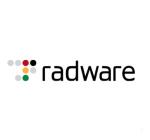What is our primary use case?
I am an integrator. I implement solutions for our customers.
It's straightforward deployment application delivery control.
Our customers have a lot of services that are public, in their internal network and external public network.
They use F5 BIG-IP to publish these services in a secure manner.
They use it for publish billing system services, and some uses for their internal services, such as the DNS active directory.
What is most valuable?
F5 BIG IP is a rock-solid solution. It's a very good solution.
I am very satisfied with the quality of this product.
There is a lot of documentation available.
I'm not very familiar with the services pattern. I am still exploring the features of this solution.
I am just working with a single application, which we need to publish. I don't know how many services they are using, and what kind of services they operate.
What needs improvement?
Technical support could be improved.
For how long have I used the solution?
I am still a bit of a novice. I have only been using F5 BIG-IP Local Traffic Manager (LTM) for a year.
We are currently deploying this on the service providers but dealing with the IT department for our customers.
It's an enterprise network that is servicing the internal IT traffic for our customers. This is traffic from the IT management systems, and billing systems.
What do I think about the stability of the solution?
All systems have bugs, and F5 is not an exception.
In my experience, I didn't face any critical bugs that stopped the deployment.
I don't think that F5 is worse than other vendors in this perspective.
How are customer service and technical support?
I had some cases where I contacted technical support.
They have a good quality level of support and have helped us resolve our issues.
However, I have had a situation where I had a bad experience, but overall it's not the norm, it was just an exception.
I would compare technical support with Cisco, although I would say that Cisco is better.
Technical support could improve.
How was the initial setup?
The setup of the F5 BIG-IP system is a very straightforward process. It is very well documented and is described on the vendor information systems.
They provide a lot of information on their site and on the central portal. You can even find information on YouTube.
What's my experience with pricing, setup cost, and licensing?
I am not familiar with the price of this solution.
What other advice do I have?
I would recommend this solution to others. I am very satisfied with it.
I would rate F5 BIG-IP Local Traffic Manager (LTM) a nine out of ten.
Which deployment model are you using for this solution?
On-premises
Disclosure: My company has a business relationship with this vendor other than being a customer: Integrator

















F5 Premium Plus Support having 24 X 7 X 365 support which is excellent at our customer site.